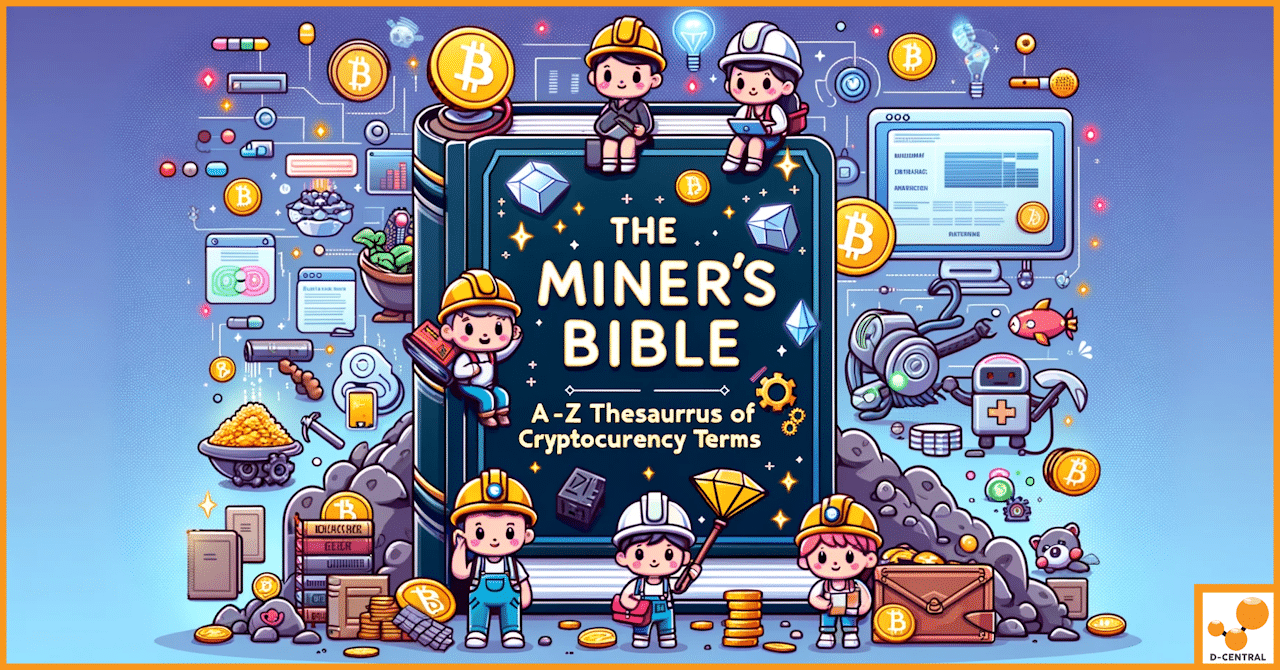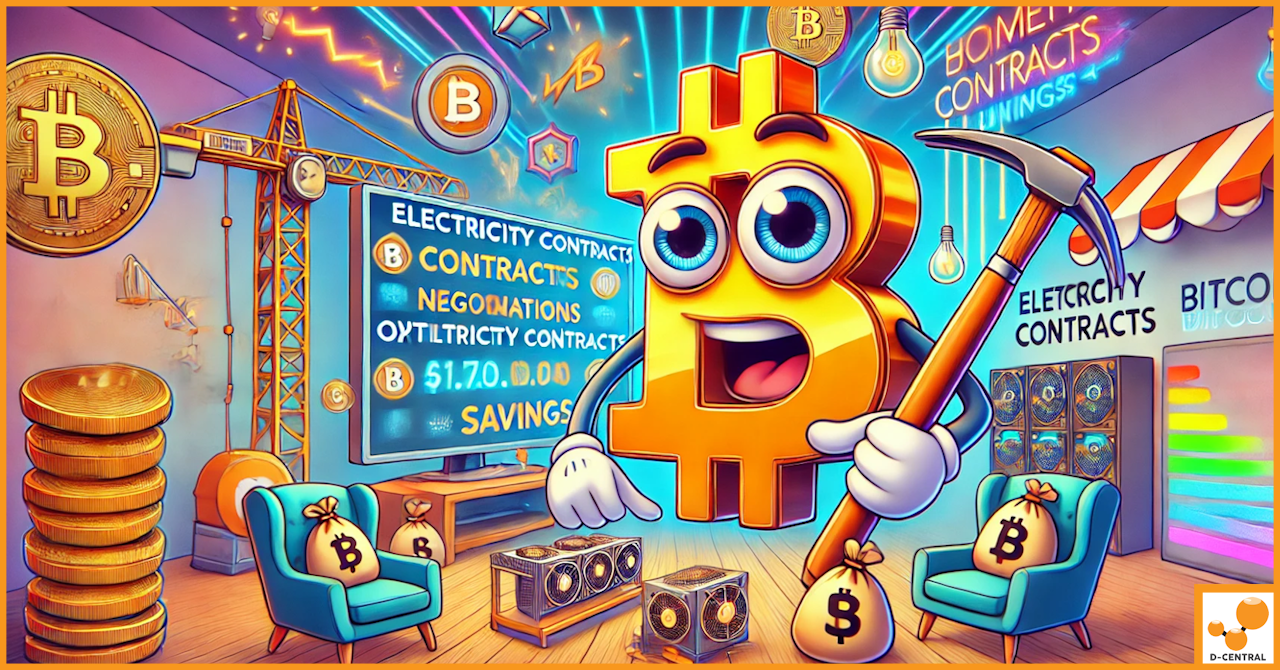
The Miner’s Bible: A-Z Thesaurus of Cryptocurrency Mining Terms
Cryptocurrency mining has rapidly evolved from a niche hobby to a complex and significant industry, integral to the functioning of
4479 Desserte Nord Autoroute 440, Laval, QC H7P 6E2

In the ever-evolving world of cryptocurrencies, Bitcoin mining emerges as a cornerstone, underpinning the integrity and functionality of the Bitcoin network. This process is not just about creating new bitcoins; it’s a critical mechanism for validating transactions and ensuring the network’s security through a decentralized consensus. As such, Bitcoin mining plays a pivotal role in the cryptocurrency ecosystem, maintaining the ledger in a trustless manner and introducing new coins into circulation in a controlled, predictable manner.
At the heart of Bitcoin mining lies the competition to solve complex cryptographic puzzles, a task that requires significant computational power and energy. Miners around the globe dedicate vast arrays of specialized hardware to this endeavor, all in the hopes of being the first to validate a new block of transactions and, in turn, earn a reward in the form of newly minted bitcoins and transaction fees. This competitive landscape has given rise to two primary mining strategies: Solo Mining and Pool Mining.
Solo Mining is the endeavor of an individual miner to tackle the blockchain’s challenges independently. This method allows the miner to keep the full reward for themselves, a tempting prospect given the value of Bitcoin. However, the immense difficulty of the puzzles and the sheer amount of competition make solo mining a daunting task, where the chances of success are slim without substantial resources.
On the other hand, Pool Mining offers a collaborative approach, where miners combine their computational power in a collective effort to increase their chances of solving the puzzles. Rewards are then distributed among the participants according to their contributed computing power. This method provides a more steady and predictable income stream, making it an attractive option for many miners.
Enter the Bitaxe device, a cutting-edge tool designed to cater to both solo and solo pool mining enthusiasts. With its one ASIC chip setting, the Bitaxe is not just a piece of hardware; it’s a beacon for those who wish to delve into the mining process with an eye towards efficiency and effectiveness. Ideal for those who value the spirit of decentralization, the Bitaxe embodies the true nature of Bitcoin mining, offering a gateway for individuals and small groups to contribute to the blockchain and have a fair shot at reaping rewards. Whether you’re venturing into the mining landscape solo or as part of a pool, the Bitaxe stands as a testament to innovation, bringing mining back to its roots and making it accessible to a broader range of participants in the cryptocurrency ecosystem.
Bitcoin mining is the heartbeat of the Bitcoin network, a process that not only introduces new bitcoins into circulation but also plays a crucial role in maintaining and securing the blockchain ledger. At its core, mining involves solving complex cryptographic puzzles to validate transactions and create new blocks on the blockchain. This process is essential for the decentralized verification of transactions, preventing double-spending, and ensuring the network’s integrity without the need for a central authority.
The mining process begins with transactions being broadcast to the network and gathered by miners into a block. Miners then compete to validate these transactions by solving a cryptographic puzzle, known as proof of work (PoW). The first miner to solve the puzzle gets the privilege to add the new block to the blockchain, which is then verified by other nodes in the network. This miner is rewarded with newly minted bitcoins (the block reward) and transaction fees from the transactions included in the block.
The proof of work algorithm is designed to be difficult and resource-intensive, ensuring that adding new blocks is a challenging and competitive process. This difficulty is a key feature of the network’s security, as it makes it impractical for any single entity to manipulate the blockchain.
Miners are participants in the Bitcoin network who use their computational power to solve the cryptographic puzzles. Early in Bitcoin’s history, mining was possible with regular CPUs found in personal computers. However, as the network grew and the difficulty of mining increased, miners sought more powerful solutions.
This quest for efficiency led to the use of GPUs (Graphics Processing Units), which offered a significant increase in processing power and energy efficiency compared to CPUs. GPUs dominated the mining landscape for a while, but the continuous quest for more efficient mining methods led to the development of FPGAs (Field-Programmable Gate Arrays) and, ultimately, ASICs (Application-Specific Integrated Circuits).
ASIC miners represent the pinnacle of mining technology. Designed specifically for the task of Bitcoin mining, ASICs offer unparalleled processing power and efficiency. Unlike CPUs and GPUs, which are general-purpose processors capable of performing a wide range of tasks, ASICs are tailored to compute the specific cryptographic hashes used in Bitcoin mining. This specialization has made ASIC miners the standard in the industry, significantly increasing the difficulty and competitiveness of Bitcoin mining.
The evolution from CPU to GPU, and finally to ASIC miners, reflects the increasing sophistication and professionalization of Bitcoin mining. This progression has led to the creation of large mining farms, where vast arrays of mining rigs work around the clock. However, it has also raised the barrier to entry for individual miners, leading to the popularity of mining pools and innovations like the Bitaxe device, which aim to democratize access to Bitcoin mining.
In summary, Bitcoin mining is a foundational process that secures the network, processes transactions, and releases new bitcoins. The evolution of mining hardware, from CPUs to ASICs, has mirrored the growth and maturation of the Bitcoin ecosystem, leading to an ever-evolving landscape of challenges and opportunities for miners.
Solo mining is the practice of mining Bitcoin, independently, without joining a mining pool. In this approach, an individual miner uses their own computational resources to attempt to solve cryptographic puzzles and validate new blocks on the blockchain. Unlike pool mining, where computational efforts and rewards are shared among a group of miners, solo mining ensures that the individual who successfully mines a block receives the entire reward, including the block subsidy and transaction fees.
Solo mining represents a path for individuals who prefer autonomy and are willing to navigate the challenges it presents for the potential of substantial rewards. While not for everyone, solo mining continues to attract a dedicated segment of the cryptocurrency mining community, driven by the allure of full reward retention and the spirit of decentralization.
Pool mining is a collaborative approach to cryptocurrency mining where individual miners combine their computational resources to increase their collective chances of solving the cryptographic puzzles required to validate new blocks on the blockchain. Instead of mining independently, participants in a mining pool work together, and when one of them successfully mines a block, the reward is distributed among all members of the pool according to their contributed computing power. This method stands in contrast to solo mining, where an individual miner attempts to mine blocks on their own.
Each payout scheme has its advantages and considerations, affecting how rewards are calculated and distributed among pool participants. Miners should choose a pool and payout scheme that aligns with their mining goals, risk tolerance, and preferences for reward consistency and transparency.
Solo pool mining involves individual miners connecting their mining hardware to a third-party maintained stratum node, similar to pool mining. However, unlike conventional pool mining where rewards are shared among all participants, in solo pool mining, the miner who successfully solves the puzzle and mines a block receives the entire reward, minus any administrative fees charged by the solo pool operator. This setup essentially allows miners to pool their resources for the purpose of finding blocks more consistently, yet rewards are not divided as in traditional pool mining.
The third-party maintained stratum node acts as a facilitator, coordinating the efforts of all connected miners. It distributes the mining tasks and relays completed work to the blockchain network. If any miner connected to the solo pool successfully mines a block, the reward is directed to that miner, less any fees for using the service.
Solo pool mining stands out as an appealing option for miners who are confident in their mining setup and wish to aim for full block rewards without the isolation of going it completely solo. It offers a blend of independence and collaborative effort, providing a unique niche within the cryptocurrency mining landscape. This approach requires a careful consideration of the balance between potential rewards and the risks of not consistently earning them, making it suitable for miners who are willing to navigate these complexities for the chance of greater payouts.
The Bitaxe ASIC miner represents a significant leap forward in the realm of Bitcoin mining technology. Tailored specifically for the needs of modern miners, the Bitaxe device is engineered to optimize efficiency, power, and performance. At its core, the Bitaxe boasts a state-of-the-art ASIC (Application-Specific Integrated Circuit) chip designed exclusively for mining cryptocurrencies like Bitcoin. This focus on a singular task allows the Bitaxe to achieve unparalleled hash rates and energy efficiency compared to multi-purpose hardware such as CPUs or GPUs.
Key features of the Bitaxe ASIC miner include its compact design, making it suitable for small home operations. making it suitable for various mining setups, from small home operations to larger mining farms. Additionally, its user-friendly interface ensures that both novice and experienced miners can easily configure and monitor their mining activities.
The Bitaxe ASIC miner shines particularly bright in the context of solo and solo pool mining. Its one ASIC chip setting is a game-changer, offering an optimal balance of power and efficiency that is crucial for miners who wish to compete independently or within a solo pool framework. This configuration allows individual miners to maximize their computational contributions, enhancing their chances of successfully mining a block and securing the full reward.
For solo miners, the Bitaxe provides the necessary firepower to make a meaningful impact on the network, despite the intense competition from larger mining operations and pools. In solo pool mining scenarios, the Bitaxe’s efficiency ensures that miners can contribute significantly to the collective effort without the excessive overhead of running multiple devices or dealing with the complexities of larger, less specialized hardware.
By making powerful, efficient mining accessible to individual miners, the Bitaxe helps to distribute the mining power more evenly across the network. This decentralization is crucial for maintaining the integrity, security, and resilience of the Bitcoin blockchain. It ensures that no single entity has disproportionate control or influence over the network, aligning with the vision of a decentralized, peer-to-peer financial system.
The decision between solo and pool mining is a pivotal one for cryptocurrency miners, influenced by a variety of factors including technical expertise, available resources, and personal mining goals. Understanding these factors can help miners make an informed choice that aligns with their objectives and circumstances.
The choice between solo and pool mining depends on a miner’s individual circumstances, goals, and preferences. Whether opting for the independence and potential rewards of solo mining with a Bitaxe ASIC miner or the consistency and accessibility of pool mining with specialized equipment like the Antminer Space Heater or Slim Edition, miners have various paths to participate in the cryptocurrency ecosystem.
Throughout this comprehensive guide, we’ve explored the intricate world of Bitcoin mining, delving into the nuances of solo and pool mining strategies. We introduced the revolutionary Bitaxe ASIC miner, a device that epitomizes efficiency and effectiveness for solo miners, and discussed the suitability of the Bitcoin Antminer Space Heater Edition and Antminer Slim Edition for those inclined towards pool mining in a home environment.
Choosing the right mining strategy is paramount. It’s a decision that should be informed by a clear understanding of one’s resources, technical expertise, and, importantly, personal goals within the cryptocurrency ecosystem. Whether you’re drawn to the autonomy of solo mining or the collaborative spirit of pool mining, it’s essential to select a path that resonates with your aspirations and capabilities.
We encourage all readers to embrace the spirit of decentralization that lies at the heart of Bitcoin mining. By participating in this process, whether through solo or pool mining, you contribute to the security and vitality of the Bitcoin network, reinforcing the decentralized principles that make cryptocurrency so revolutionary.
For those intrigued by the potential of solo and solo pool mining, we invite you to explore further the Bitaxe ASIC miner and its benefits. This device represents not just a technological advancement but a commitment to the principles of efficiency, effectiveness, and decentralization in Bitcoin mining.
By arming yourself with knowledge and selecting the right tools, you can navigate the complex yet rewarding world of Bitcoin mining. Whether you choose the path of solo mining with Bitaxe or pool mining with specialized equipment, your contribution is a valuable part of the ongoing journey towards a decentralized financial future.
What is Bitcoin mining?
Bitcoin mining is the process of validating transactions and adding them to the blockchain ledger. It involves solving complex cryptographic puzzles to secure the network, process transactions, and release new bitcoins into circulation.
What are the primary strategies for Bitcoin mining?
The two primary strategies for Bitcoin mining are Solo Mining, where an individual mines independently, and Pool Mining, where miners combine their computational power in a collective effort to increase their chances of solving puzzles and earning rewards.
What is the Bitaxe device?
The Bitaxe device is a cutting-edge ASIC miner designed for Bitcoin mining. It features an efficient, one ASIC chip setting, making it ideal for both solo and solo pool mining, and is tailored to optimize efficiency, power, and performance for modern miners.
What are the benefits of Solo Mining?
Benefits of Solo Mining include retaining the full reward for successfully mined blocks, complete control over mining operations, and enhanced privacy and security. However, it requires a significant investment and comes with challenges such as unpredictability of rewards and high operational costs.
What are the benefits of Pool Mining?
Benefits of Pool Mining include more consistent rewards, reduced entry barriers, shared resources and costs, and access to a community and support network. Drawbacks include pool fees, reduced payouts per block, and dependence on pool operators.
What is Solo Pool Mining?
Solo Pool Mining is a hybrid approach where individual miners connect their hardware to a third-party maintained stratum node, similar to pool mining. Unlike traditional pool mining, the miner who successfully mines a block in solo pool mining receives the entire reward, minus any fees charged by the solo pool operator.
How do I choose between Solo and Pool Mining?
Choosing between Solo and Pool Mining depends on factors such as technical expertise, available resources, personal mining goals, and preferences for reward consistency. Solo mining requires substantial investment and technical knowledge but offers the potential for larger rewards, while Pool mining is more accessible and provides more consistent but smaller rewards.
DISCLAIMER: D-Central Technologies and its associated content, including this blog, do not serve as financial advisors or official investment advisors. The insights and opinions shared here or by any guests featured in our content are provided purely for informational and educational purposes. Such communications should not be interpreted as financial, investment, legal, tax, or any form of specific advice. We are committed to advancing the knowledge and understanding of Bitcoin and its potential impact on society. However, we urge our community to proceed with caution and informed judgment in all related endeavors.
Related Posts

Cryptocurrency mining has rapidly evolved from a niche hobby to a complex and significant industry, integral to the functioning of

Home Bitcoin mining has emerged as an exciting opportunity for cryptocurrency enthusiasts to participate in the blockchain revolution. However, success

In the ever-evolving world of Bitcoin, the User Activated Soft Fork (UASF) emerges as a beacon of spontaneous order amidst